Rodeo History:
A Legendary Event
A Legendary Event
Rodeo history is full of legendary cowgirls and cowboys. It also reflects a blend of cultural influences that continue to shape rodeos today. And, rodeo history shows how the “Western lifestyle” has changed and developed over time while carrying its tradition forward to the future.
Today, audiences interested in rodeos are growing. The Professional Rodeo Cowboys Association boasts 40 million fans, and Professional Bull Riders (PBR) boasts 83 million fans. (For reference, the National Football League (NFL) has 160 million fans according to an ESPN poll.)

And, interest in rural US traditions and cowboy history is rising. Consider the 2010 remake of True Grit – a popular 1969 John Wayne film. More recently, Beyonce’s Cowboy Carter album and tour drew more attention to western cultural heritage and lifted up another perspective on this shared United States heritage.
With growing interest and a large audience, rodeo continues to make its mark in professional sports and US culture.
Rodeo has many characteristics of a sport – it brings communities together as people root for their teams and favorite athletes. Like sports, rodeo inspires generations. Most people in the US know the story behind the US hockey team’s win over the Soviet team in 1980. And, it’s rare to meet a person who hasn’t seen an inspirational sports movie or two. Rodeo fans are similarly inspired by historic bull rides and other feats.
Like sports athletes, cowboys and cowgirls learn important skills and life lessons, including hard work, discipline, perseverance, responsibility, and more.
And yet, rodeo stands out as an inspiring sport because of its deep connection to tradition and the Western way of life. When you’re talking to rodeo people, you’ll hear this phrase or “cowboy way of life”. Generally, these phrases refer to traditional ranching work and life on the frontier.
Before you go to a rodeo, enjoy learning a little more about rodeo history, rodeo events, rodeo stars, rodeo terms, and more. We’ll cover everything.

Rodeo’s Roots
Myths surround the origin of rodeos. A common myth relays a conversation between two ranchers. One complained that he had a bull that couldn’t be ridden. The other replied that he had a cowboy that couldn’t be bucked.
More generally, rodeo develops from several influences – Spanish colonizers, Mexican Vaquero culture, indigenous horse culture, and ranching’s prevalence in the western United States.
“Rodeo” comes from the Spanish word “rodear”, which means to surround. It came from the ranching practice of selecting and rounding up wild cattle in Mexico. The first cowboys were vaqueros who worked on ranches across northwestern Mexico.
Vaqueros included indigenous people, black people, mixed race people, and criollos (Spaniards born in North America). They would hold various informal competitions during their downtime to show off their skills.
With the 1848 Treaty of Guadalupe Hidalgo, the United States annexed a large portion of northern Mexico. And, cowboy and rodeo culture developed differently between Mexico and the United States.
In the early twentieth century, rodeo sports were open to all. Everyone, regardless of race or gender, competed across events. In this period after the Civil War, about 25 percent of cowboys were black.
Modern rodeos are at once competitions and entertainment echoing these early competitions among cowboys and the wild west shows that started in the 1880s.
Perhaps the most well-known wild west show was Buffalo Bill’s Wild West. This show featured skilled trick ropers, bronc riders, and other talented performances. It traveled around the United States and Europe spreading awareness and increasing the allure of life in the Western United States.
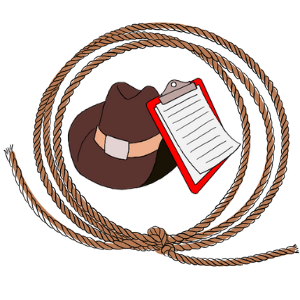
Rodeo’s Professionalization
Over time, rodeos became more formal competitions with rules and specific regulations – starting with the formation of the Rodeo Association of America (RAA) in 1929. These early associations formed in response to untrustworthy rodeo organizers who didn’t pay winnings or didn’t even put on the rodeo they advertised.
Some rodeo associations continue to this day. Some tracing their roots to these first associations. For example, the Professional Rodeo Cowboys Association (PRCA) was formed in 1936 under the name Cowboy Turtles Association.
Rodeos also developed to be more than competitions as they were influenced by Wild West shows that traveled the United States and Europe in the late nineteenth century.
The early competitive events at US rodeos included trick roping and trick riding, but these events shifted from competition to specialty act in the 1930s. After the 1930s, many rodeos stopped hosting rough stock events for women. In part, this change came after famous cowgirl Bonnie McCarroll’s death in a bronc riding accident at the Pendleton Round-Up in 1929 and pushes to protect women from the dangerous sport. It also happened as cowboys formed the all-male RAA and excluded women from its sanctioned rodeos.
Over the next two decades, rodeo producers reshaped rodeo to be a men’s sport. Some of these changes came from the financial pressures of the Great Depression as men’s earning opportunities were prioritized over women’s. Others came from the rise of the first cowboy films that defined the Old West in terms of tough white men saving vulnerable white women, erasing the reality: Cowboys were a diverse group, and children in ranching families often developed the same skills regardless of gender.
With this reshaping, women’s participation in rodeos changed to beauty pageants and rodeo queen competitions. Rodeos started to host beauty pageants and rodeo queen competitions. Women could also participate in the opening ceremonies carrying the US flag on horseback.
In 1948, cowgirls formed the Girls’ Rodeo Association (GRA) to organize rodeo competitions for women. Now called the Women’s Professional Rodeo Association (WPRA), it has worked with the PRCA to bring women’s rodeo sports broad attention and include women’s sports at PRCA rodeos. Today, women primarily compete in team roping, barrel racing, and breakaway roping. Though, there are some cowgirls who train and compete in bronc riding.
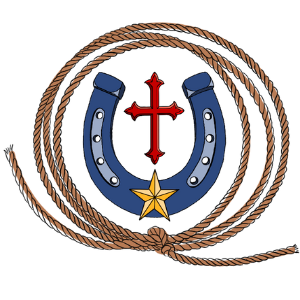
Rodeo, Patriotism, & Religion
Rodeos also became deeply connected to patriotism in the United States. Many rodeos were held as part of 4th of July celebrations. For example, Buffalo Bill got his career start as a Wild West show organizer because he wanted to ensure there was a 4th of July celebration in North Platte, Nebraska.
This connection to patriotism became even more pronounced following World War II with regular recognition for military veterans since many cowboys had served in the military. Rodeos continue to take pride in patriotism and celebrate veterans. Rodeos start with the national anthem and horses riding around the arena carrying the US flag. Often, rodeos offer military discounts or even host special military nights.
Rodeos are also connected to Christian religious practices – often starting with a prayer. Generally speaking, the first cowboys had been raised in Christian families and viewed religion as something to be lived rather than focus on regular church attendance.
Some pastors would travel to hold meetings where the cowboys were, and the tradition of “Cowboy Churches” continues today. Some rodeos will even host “Cowboy Church” on Sunday.

Rodeo & Animals
In rodeo, the animals are competitive athletes just like the cowboys and cowgirls are. The best example of this attitude is reflected in bull riding. The score is split evenly between the bull and rider that combine to yield a total result.
Famous bulls include:
- Tornado – No one could ride this large, muscular bull for a full eight seconds.
- Oscar – Despite his small size, this bull was fast and bucked many riders.
- Red Rock – A very smart bull that bucked every rider until Lane Frost was successful.
- Bodacious – A fast and fierce bull responsible for breaking Tuff Hedeman’s face.
- Little Yellow Jacket – A very difficult bull to ride because of agility and quick turns. Yet, this bull never injured a rider by avoiding fallen ones.
- Blueberry Wine – Bull known for speed and bucked off many skilled riders.
- Bushwacker – An unpredictable and angry bull that was very difficult to ride successfully.
Some have concerns over animal treatment at rodeos. Some of the events – like steer wrestling – look terribly uncomfortable for the animal.
However, rodeos and rodeo associations have strict rules for animal treatment. The Professional Bull Riders (PBR)’ rules include no eclectic shock or genital mutilation and are as detailed to include rules about stalls, travel conditions, and travel duration.

Rodeo & Technology
Rodeo carries past traditions forward, so it may seem like a discussion of modernization and technology is out of place.
However, new technologies have had an impact on rodeo history. We’ll cover a few recent developments below.
Scoring
Right after the prize money, cowboys and cowgirls care about the scoring. Like any sport, it needs to be accurate and fair.
In recent years, various organizations have tested new timing technologies to improve timing for several rodeo events.
The Professional Bull Riders (PBR) used SkyStart – AI-powered camera – to enhance its timing and playback. It allowed PBR to identify precisely when a bull left the chute and when its rider let go of the rope.
The Women’s Professional Rodeo Association (WPRA) has also worked with new timing technology for barrelracing: By A Nose. Rather than relying on a single beam, the By a Nose timer has four beams at different heights. These multi-height beams make it much more accurate to know when a horse started a run and finished the run since horses' heads move up and down as they run.
Marketing
As changes in technology from radio and broadcast to streaming and social media, rodeos adopted these new communications technologies to reach more people and grow their audiences. Rather than relying solely on word of mouth, fliers, and newspapers, rodeos now use all of the communication tools available. It’s common to see rodeos posting on TikTok, Instagram, X, Facebook, and even YouTube.
Rodeos even use technology to streamline and encourage more traditional marketing methods. For example, using Rodeo Ticket’s automated referral system makes tracking rodeo queen ticket competitions and sales from local businesses. You can even expand your ambassador program to include each of your ticket buyers – so they can be rewarded with free tickets if they refer enough friends and family to buy tickets.
Ticketing
Rodeo attendees used to have to get tickets in-person. That’s no longer the case. The rise of the internet and online sales changed how people buy tickets.
Buying tickets online helped reduce box office lines, eliminate double-selling seats, and make it easier for travelers to buy tickets in advance. It became much easier for rodeos to sell more tickets and even sell out performances consistently.
While credit cards made it easier and more convenient to pay for things, it also led to a new issue: chargebacks.
Chargebacks happen when a credit card thief takes a credit card and makes a bunch of purchases. When the credit card owner realizes the theft, they dispute the charge and the vendor has to refund it and pay a $7 fee.
Other times, chargebacks occur when rodeo attendees decide that they want a refund – even if they went to the rodeo. Either way, it’s bad for a rodeo’s bottom line.
Scalping tickets also became a more pronounced challenge for rodeos because scalpers could sell tickets multiple times and issue a chargeback. Scalping means that rodeos lose money and deal with a customer service nightmare on rodeo day. Even if scalpers didn’t oversell or issue a chargeback, the inflated sales prices from scalpers takes advantage of attendees and harms the rodeo’s brand.
To respond to these concerns, ticketing software platforms developed tools to mitigate chargebacks and scalping. With Rodeo Ticket, you can customize your strategy to prevent chargebacks and stop scalpers. You can set cart limits, block purchases based on various criteria, and even review suspicious orders.
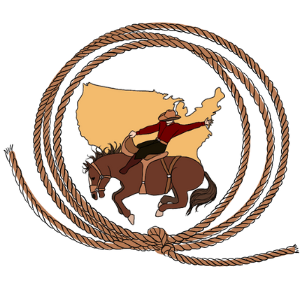
Famous Historic Rodeos
![]() Deer Trail Rodeo – This historic rodeo was held on the 4th of July in 1869. The rodeo continues today and is still held on the same grounds in Deer Trail, Colorado.
Deer Trail Rodeo – This historic rodeo was held on the 4th of July in 1869. The rodeo continues today and is still held on the same grounds in Deer Trail, Colorado.
![]() Mandan Rodeo Days – Dating to 1883, it was once part of the “Big Loop” with Cheyenne and Calgary rodeos. Today, it’s a PRCA rodeo that you can enjoy around the 4th of July.
Mandan Rodeo Days – Dating to 1883, it was once part of the “Big Loop” with Cheyenne and Calgary rodeos. Today, it’s a PRCA rodeo that you can enjoy around the 4th of July.
![]() West of the Pecos Rodeo – This Texas rodeo was first held on the 4th of July in 1883. Today, you can enjoy performances at this PRCA rodeo.
West of the Pecos Rodeo – This Texas rodeo was first held on the 4th of July in 1883. Today, you can enjoy performances at this PRCA rodeo.
![]() World’s Oldest Continuous Rodeo – Enjoy this Payson, Arizona tradition that dates to 1884. This rodeo occurs in August, though it now hosts other rodeos throughout the year.
World’s Oldest Continuous Rodeo – Enjoy this Payson, Arizona tradition that dates to 1884. This rodeo occurs in August, though it now hosts other rodeos throughout the year.
![]() Prescott Frontier Days – Founded in 1888, you can still enjoy this rodeo the week of 4th of July in Arizona.
Prescott Frontier Days – Founded in 1888, you can still enjoy this rodeo the week of 4th of July in Arizona.
![]() Cheyenne Frontier Days – With its start in 1897, Cheyenne Frontier Days is now one of the biggest rodeos in the United States. Take a trip to enjoy it in July.
Cheyenne Frontier Days – With its start in 1897, Cheyenne Frontier Days is now one of the biggest rodeos in the United States. Take a trip to enjoy it in July.
![]() Fort Worth Stock Show and Rodeo – While the Fort Worth Stock Show began in 1896 before it added a rodeo, it added a rodeo several years later. Today it is one of the biggest rodeos in the world.
Fort Worth Stock Show and Rodeo – While the Fort Worth Stock Show began in 1896 before it added a rodeo, it added a rodeo several years later. Today it is one of the biggest rodeos in the world.
![]() Pendleton Round-Up – Enjoy this Oregon rodeo in September that traces its roots to 1910.
Pendleton Round-Up – Enjoy this Oregon rodeo in September that traces its roots to 1910.
![]() Calgary Stampede – One of the biggest rodeos in the world, this Canadian rodeo started in 1912.
Calgary Stampede – One of the biggest rodeos in the world, this Canadian rodeo started in 1912.
![]() Cowtown Rodeo – Held throughout the summer in Pilesgrove, New Jersey, you can enjoy this historic, family-run rodeo tradition that started in 1929.
Cowtown Rodeo – Held throughout the summer in Pilesgrove, New Jersey, you can enjoy this historic, family-run rodeo tradition that started in 1929.
![]() Steamboat Springs ProRodeo Series – While it’s unclear when the first Steamboat Springs Rodeo occurred, rodeo events in Steamboat Springs were happening since at least 1898. The city also became well-known for its challenging bucking animal breeding. You can still enjoy weekend rodeo performances at Steamboat Springs throughout the summer.
Steamboat Springs ProRodeo Series – While it’s unclear when the first Steamboat Springs Rodeo occurred, rodeo events in Steamboat Springs were happening since at least 1898. The city also became well-known for its challenging bucking animal breeding. You can still enjoy weekend rodeo performances at Steamboat Springs throughout the summer.
Boston Garden Rodeo – With its first show in 1931 at the new Boston Garden Arena, the Boston Garden Rodeo stands out for continuing to welcome cowgirls to compete in any event alongside cowboys even after women’s participation was being banned in western rodeos. This rodeo also makes history because cowboys eventually realized that they were paying more to compete than they had a chance of winning. The strike was resolved in the competitors’ favor and a new producer was brought in. Today, the New England Rodeo in Norton carries the Boston Garden Rodeo’s legacy.
Madison Square Garden Rodeo – In its prime, the Madison Garden Rodeo was one of the biggest rodeos with its winners being recognized as world champions. It lost prominence as the Cowboy Turtles Association created its own finals to declare world champions.
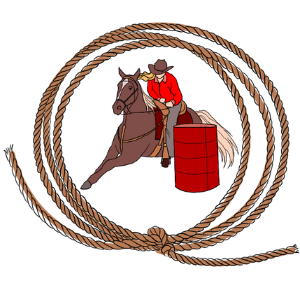
Common Rodeo Events
The most common rodeo events in the United States are:
- Bull Riding – Cowboys compete to ride a bull for eight seconds.
- Bareback Riding – Cowboys compete riding a bucking bronc without a saddle.
- Saddle Bronc Riding – Cowboys compete riding a saddled bucking bronc.
- Steer Wrestling – Cowboys ride on horseback next to a steer and slide off the horse to wrestle the steer to the ground.
- Calf Roping – Ropers lasso a calf and race to tie three of the calf’s legs together.
- Team Roping – A header and a heeler work together to rope a calf. The header ropes the horns, while the heeler ropes the hind legs.
- Barrel Racing – Cowgirls race around three barrels in a clover leaf pattern without knocking over a barrel.
- Breakaway Roping – Cowgirls rope a calf quickly without tying the calf’s legs together.
Other rodeo competitive events include goat tying and pole bending, though these events are less common at professional rodeos.
Some rodeos also offer other non-sanctioned events like mutton bustin’ and bull poker.
In mutton bustin’, kids put on safety gear and ride sheep. It’s one of the most popular non-sanctioned events rodeos organize.
Bull poker is a game where people sit around a table or stand in the arena while a bull runs around. The last person standing wins.
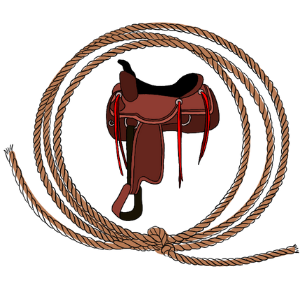
Types of Rodeo
While US rodeo developed its own traditions and professionalization, other rodeo traditions have developed in other parts of the world.
Charrería
Included in UNESCO’s Intangible Cultural Heritage, charrería is from Mexico. You can see performances of various herding skills, including roping and reining from horseback or on foot.
Another key aspect of charrería is the uniform from clothing to saddles. All of this gear is made by local artisans, which makes this tradition even more special.
Chilean Rodeo
Drawing its roots from early Chilean ranching practices of rounding up new calves from the Andes, Chilean rodeo specializes in a specific way to round-up a calf. In this method, two riders work as a team to pin a calf between their horses and a padded wall of an inner ring inside an arena. Horses train for at least five years before they can compete in these rodeos.
Ranch Rodeo
Ranch rodeos host team competitions of typical ranch tasks. Events include wild cow milking, team penning, calf branding, bronc riding, and team doctoring. Most of the events are timed, and scoring is based on which team can finish the task the fastest. While not the most common type of rodeo in the United States, you can still find ranch rodeos to attend.
Other Equestrian Sports
Besides rodeo itself, equestrian sports are broad and diverse. Olympic disciplines include dressage, eventing, and show jumping. Driving, endurance riding, horseball, reining, tent pegging, and vaulting are other equestrian disciplines.
Horse racing is another important equestrian sport: flat racing, harness racing, point-to-point, steeplechase, and thoroughbred horse.
Within equestrian sports, English riding and Western riding are two distinct styles and approaches to horsemanship. English riding includes classical dressage, dressage, English pleasure, eventing, field hunter, foxhunting, Hymkhana, hunt seat, saddle seat, show hunter, show jumping, show hack, team chasing, and quadrille.
Western riding includes cowboy mounted shooting, cowboy polo, O-Mok-See, reining, trail, Western pleasure, and Western riding.
Other sports include stock handling and harnessing. Stock handling includes campdrafting, cutting, ranch sorting, team penning, and working cow horse.
The harness section includes combined driving, draft horse showing, fine harness, pleasure driving, roadster, and scurry driving.
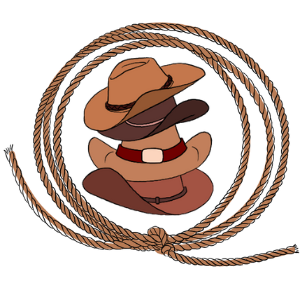
Rodeo Personnel
It takes a lot of work to put together a rodeo. Rodeos are often organized by local rodeo committees, and committee membership changes depending on the organization’s rules. Committees sell tickets, find sponsors, host rodeo queen competitions, and hire independent contractors to deliver excellent performances each day of the rodeo.
Contractors include:
- Bullfighters – Defend and protect bull riders in the arena by distracting the bull.
- Barrelmen – Distract bulls by popping in and out of a barrel.
- Clowns – Entertain the crowd between contestants and help distract bucking bulls.
- Announcers – Narrate what’s happening in the arena, report scores, read advertisements, etc.
- Specialty Acts – Offer entertainment during the rodeo, including trick riding.
- Timers – Score timed events.
- Photographers – Take pictures at the rodeo that can be used for future marketing.
- Stock Contractors – Provide animals to perform in various events.
You’ll see all of these people when you go to a rodeo. Visit our calendar to find a rodeo near you.

Rodeo Associations
There are many rodeo associations throughout the United States. Rodeo associations sanction competitions and host annual finals. Junior and high school rodeo associations support young people developing skills in rodeo sports and gain competitive experience with their peers.
Rodeo associations can be regional, like the many state rodeo associations in the United States. Other associations are national or international.
![]() Professional Rodeo Cowboys Association (PRCA) – Initially founded as the Cowboy Turtles Association following the Boston Garden Rodeo Strike, the PRCA is one of the biggest professional rodeo associations and hosts the National Finals Rodeo (NFR) each year in Las Vegas, Nevada.
Professional Rodeo Cowboys Association (PRCA) – Initially founded as the Cowboy Turtles Association following the Boston Garden Rodeo Strike, the PRCA is one of the biggest professional rodeo associations and hosts the National Finals Rodeo (NFR) each year in Las Vegas, Nevada.
![]() Women’s Professional Rodeo Association (WPRA) – Founded in 1948 as the Girls Rodeo Association to bring women’s sports back to rodeo, the WPRA hosts annual championships for barrel racing. It also works with the PRCA to get women’s events at PRCA rodeos.
Women’s Professional Rodeo Association (WPRA) – Founded in 1948 as the Girls Rodeo Association to bring women’s sports back to rodeo, the WPRA hosts annual championships for barrel racing. It also works with the PRCA to get women’s events at PRCA rodeos.
![]() International Professional Rodeo Association (IPRA) – Founded in 1957, the IPRA hosts the International Finals Rodeo and the International Finals Youth Rodeo. It also sanctions National All Region Finals that are hosted in several regions.
International Professional Rodeo Association (IPRA) – Founded in 1957, the IPRA hosts the International Finals Rodeo and the International Finals Youth Rodeo. It also sanctions National All Region Finals that are hosted in several regions.
![]() Military Rodeo Cowboys Association (MRCA) – Founded to support military service members and veterans to continue competing in rodeo sports.
Military Rodeo Cowboys Association (MRCA) – Founded to support military service members and veterans to continue competing in rodeo sports.
![]() National Senior Pro Rodeo Association (NSPRA) – Founded in 1979 as the National Old Timers Rodeo Association. It focuses on rodeo competitions in the United States and Canada for cowboys and cowgirls ages 40 or older.
National Senior Pro Rodeo Association (NSPRA) – Founded in 1979 as the National Old Timers Rodeo Association. It focuses on rodeo competitions in the United States and Canada for cowboys and cowgirls ages 40 or older.
![]() International Gay Rodeo Association (IGRA) – Founded in 1985 to connect regional gay rodeo associations, the IGRA sanctions rodeos and hosts the World Gay Rodeo Finals annually.
International Gay Rodeo Association (IGRA) – Founded in 1985 to connect regional gay rodeo associations, the IGRA sanctions rodeos and hosts the World Gay Rodeo Finals annually.
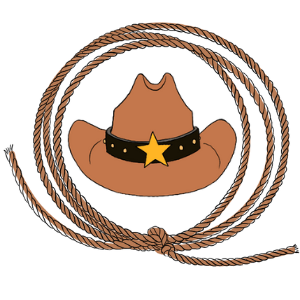
Famous Rodeo Athletes
Buffalo Bill (1846–1917) – Famous for starting the Wild West shows and taking his show across the United States and to Europe.
Nat Love (1854–1921) – Famous for kickstarting his rodeo career by winning six events at a 4th of July Rodeo in Deadwood in 1876.
Vicente Oropeza (1858–1923) – First world champion of trick roping who traveled with Buffalo Bill's Wild West show.
Annie Oakley (1860–1926) – Famous sharpshooter who often appeared in Buffalo Bill’s Wild West show.
Bill Pickett (1870–1932) – Developed “bulldogging,” a new technique for catching a steer. It continues as a competitive event at many rodeos called either bulldogging or steer wrestling.
Ikua Purdy (1873–1945) – Famous roper who won the World Roping Championship in Cheyenne in 1908.
Tom Three Persons (1888–1949) – Famous bronc rider known for performances at Canadian rodeos.
Jackson Sundown (1863–1923) – Famous bronc and bull rider.
Jesse Stahl (1879–1935) – Skilled bronc rider famous for inventing “hoolihanding,” a bull wrestling technique.
Bertha Blancett (1883–1979) – Became the first woman to ride broncs in Cheyenne, continued competing, and also worked in the film industry.
Lucille Mulhall (1885–1940) – Known for her skill in roping, she was tough competition for cowboys at rodeos. She’s also known for roping a wolf and killing it with her bare hands for Theodore Roosevelt.
Bonnie McCarroll (1897–1929) – Famous bronc, steer, and trick rider with a successful competitive career. She won the bronc riding championship at Madison Square Garden and Cheyenne Frontier Days in 1922.
Mabel Strickland Woodward (1897–1976) – Famous trick rider at the Walla Walla rodeo who also competed in saddle bronc riding, steer roping, and relay racing.
Tad Lucas (1902–1990) – Famous rider known particularly for her trick riding. She also rode broncs and competed in relays and races.
Wanda Harper Bush (1931–2015) – Famous for winning multiple world championships in equestrian sports.
Mildred Farris (1933–2013) – Well-known barrel racer and secretary for the Girls Rodeo Association who worked to get barrel racing included at ProRodeo (PRCA) events.
Myrtis Dightman (1935– ) – Famous bull rider who was the first black cowboy to compete at the National Finals Rodeo.
Mary Burger (1948– ) – Famous barrel racer with a world championship title.
Charles Sampson (1957– ) – Famous bull rider and first black cowboy to win a world championship in professional rodeo.
Lane Frost (1963–1989) – Famous as the first cowboy to successfully ride the bull Red Rock.
Tuff Hedeman (1963– ) – Famous for successfully riding Bodacious.
Fred Whitfield (1967– ) – Famous tie-down roper with eight PRCA world championship titles and three National Finals Rodeo titles.
Ty Murray (1969– ) – Famous for winning nine world championship titles and his work as a Professional Bull Riding (PBR) commentator.
Charmayne James (1970– ) – Famous, decorated barrel racer.
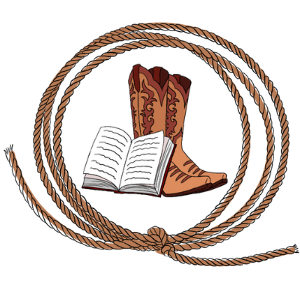
Key Rodeo Terms
Just like all sports, rodeo has terms. New fans might be unfamiliar with these words, so we’ll cover some of them here.
- Barrier – A line across the arena. There is also a penalty for breaking the barrier early.
- Box – Checkpoint before the rider enters the arena. A 10-second penalty applies if a rider leaves the box too quickly.
- Bronc Rein – Braided rope attached to the horse’s halter.
- Chute – Holding place for animals in the rodeo.
- Crossfire Penalty – When the header fails to change the direction of the calf before the heeler gets to the rear of the calf.
- Draw – Random assignment of bulls and broncs to competing cowboys.
- Flank Strap – Designed to prevent harm to bulls and horses, this strap is used to apply pressure and encourage bucking.
- Flankmen – Check the straps on the animal to ensure everything is ready before the rider begins.
- Hooey – The name of the knot used to tie a calf’s legs.
- Hung Up – When a cowboy riding a bucking animal is in trouble – often because his hand is caught in the rope rein or handle.
- Left or Right Delivery – The direction an animal is standing in the chute before it exits.
- Mark Out – Penalty applied if the cowboy’s feet do not stay above the horse’s shoulders.
- Pickup Men – Riders on horseback that help cowboys get safely off the bucking horse or bull when the ride is over. They also return the bull or horse to the gate.
- Piggin’ String – Rope designed specifically for tying calf legs.
- Pigtall – This string is connected to the barrier to ensure that competitors give calves enough time to leave the chute.
- Roughstock – Animals raised to perform as athletes in bareback, bull, and saddle bronc riding.
- Slack – Opportunity for non-official cowboy and cowgirl competitors at a rodeo to compete in rodeo events.
- Turn Out – Excusing from competition for valid, but non-medical reasons.
Rodeo encapsulates United States rural culture. Whether you grew up with it or you’re experiencing it for the first time, rodeo’s traditions enthrall audiences year after year.



